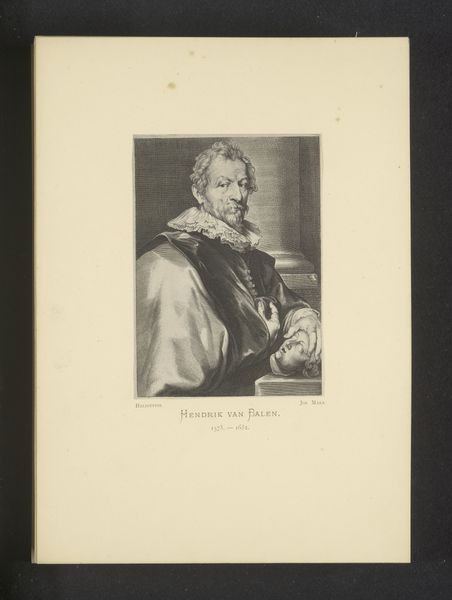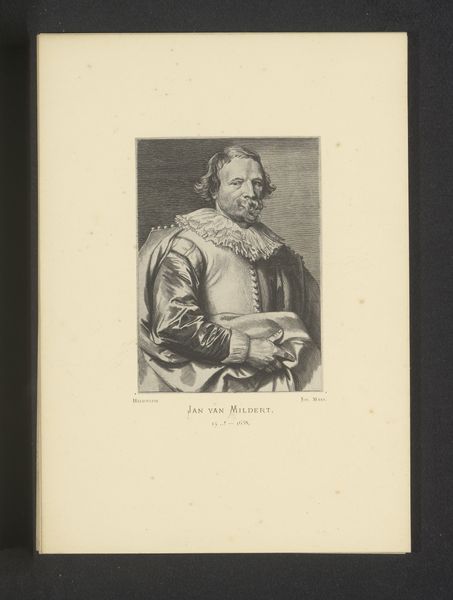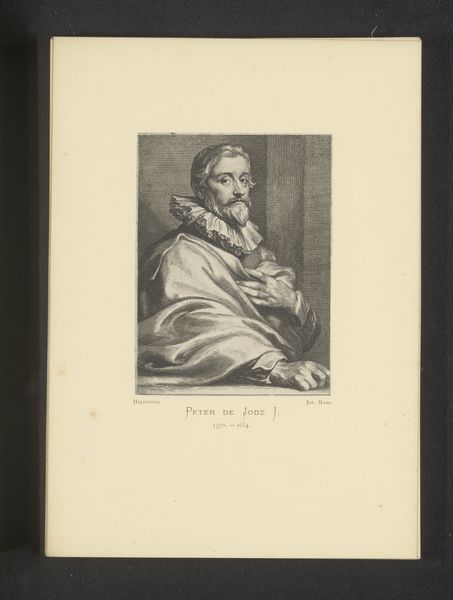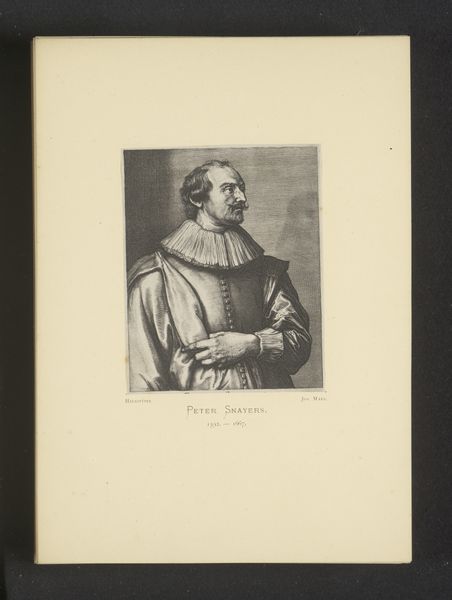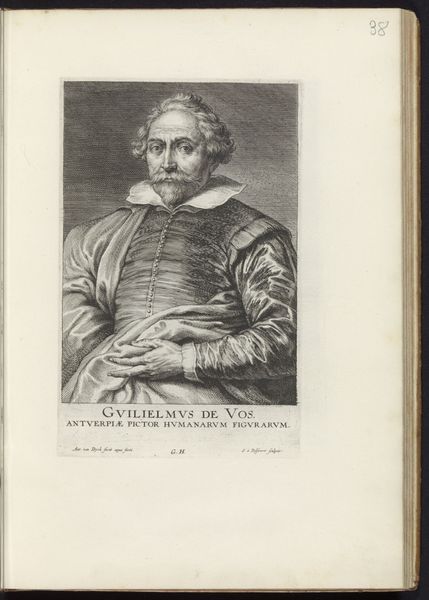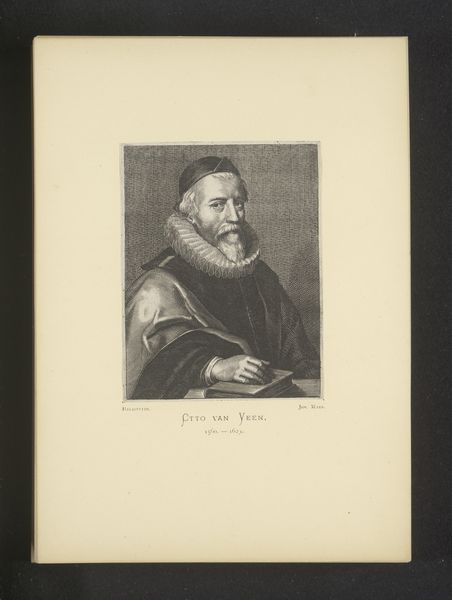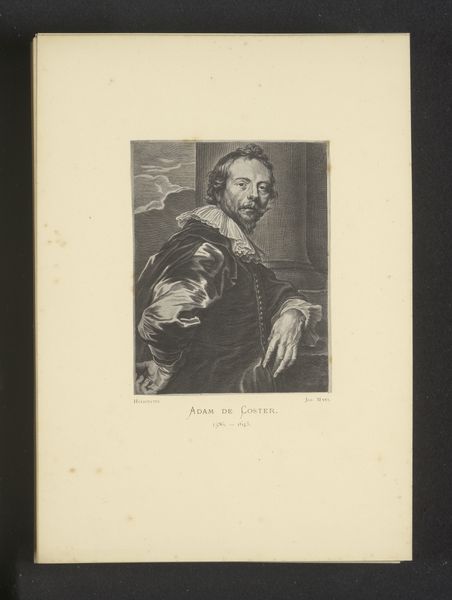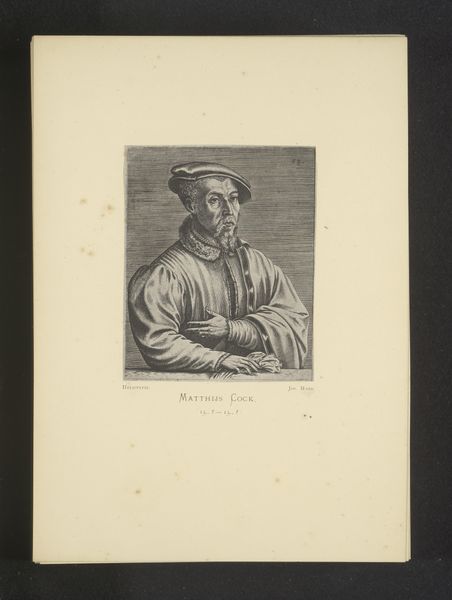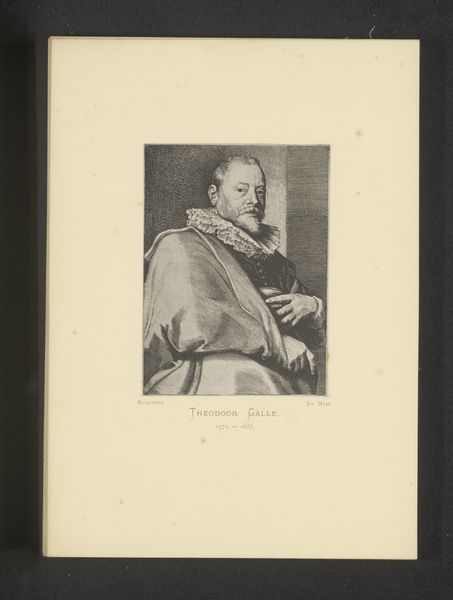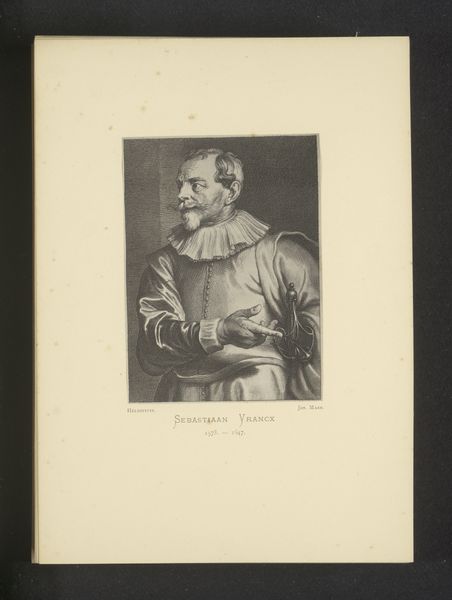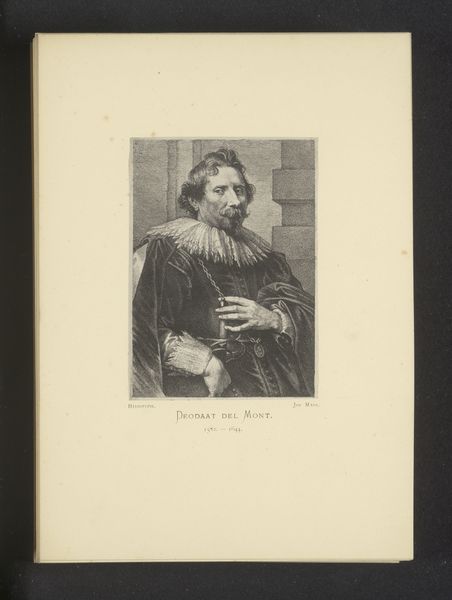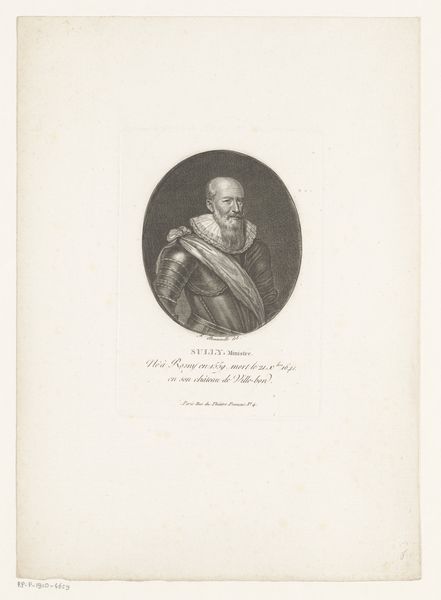
Reproductie van een gravure van een portret van Willem de Vos door Schelte Adamsz. Bolswert en Anthony van Dyck before 1877
0:00
0:00
Dimensions: height 120 mm, width 88 mm
Copyright: Rijks Museum: Open Domain
Curator: Just look at the intensity in his gaze! A stern, watchful countenance framed by a luxurious, lacy collar... What an era for collars, right? Editor: Indeed. The crisp detail and delicate line work lends this reproductive engraving a certain sobriety. From what I gather, it renders a portrait of Willem de Vos by Anthony van Dyck, and Schelte Adamsz. Bolswert worked on it, before 1877 according to our records, rendered on paper. Curator: I'd say this portrait captures the gravity and maybe even the burdens of the Dutch Golden Age. Look at his hands, clasped tightly! It feels like a quiet sort of power, doesn't it? Editor: Quite so. Focusing on the pictorial structure, observe the masterful deployment of chiaroscuro, casting Willem de Vos into sharp relief against a relatively dark backdrop. His face is luminous, almost spectral... What’s your take on the relationship between subject and space? Curator: To me, he seems slightly… trapped. Like a butterfly pinned down, his eyes longing for a freedom he might not have had. Those high collars were nice but must have been so hot. Talk about constraints. Editor: In art-historical terms, it presents a fine example of Baroque portraiture—dramatic lighting, rich textures, and the projection of psychological depth, all contributing to a visual rhetoric aimed at imbuing the subject with presence. How do you read this visuality within a sociohistorical framework? Curator: Framework... hmm. Well, it speaks volumes of the time’s ethos: intellect, but controlled... passion, carefully channeled... The portrait, a symbol of societal weight on individual potential... A heavy collar can signify an even heavier crown. I think our friend William must have carried great burdens. Editor: Perhaps. I'm more attuned to the technical virtuosity on display; how this print elevates a common reproductive method into something genuinely artful. It showcases an exquisite manipulation of form and shadow that creates depth and dimensionality on a flat surface, after all. A compelling dance of signs and symbols. Curator: Absolutely! Even as a copy, its energy moves and affects, a kind of portal back to a singular mind and the many layers we build on that original genius. Editor: And now, we find ourselves looking back, interpreting those layers. A delightful paradox of history, isn't it?
Comments
No comments
Be the first to comment and join the conversation on the ultimate creative platform.
